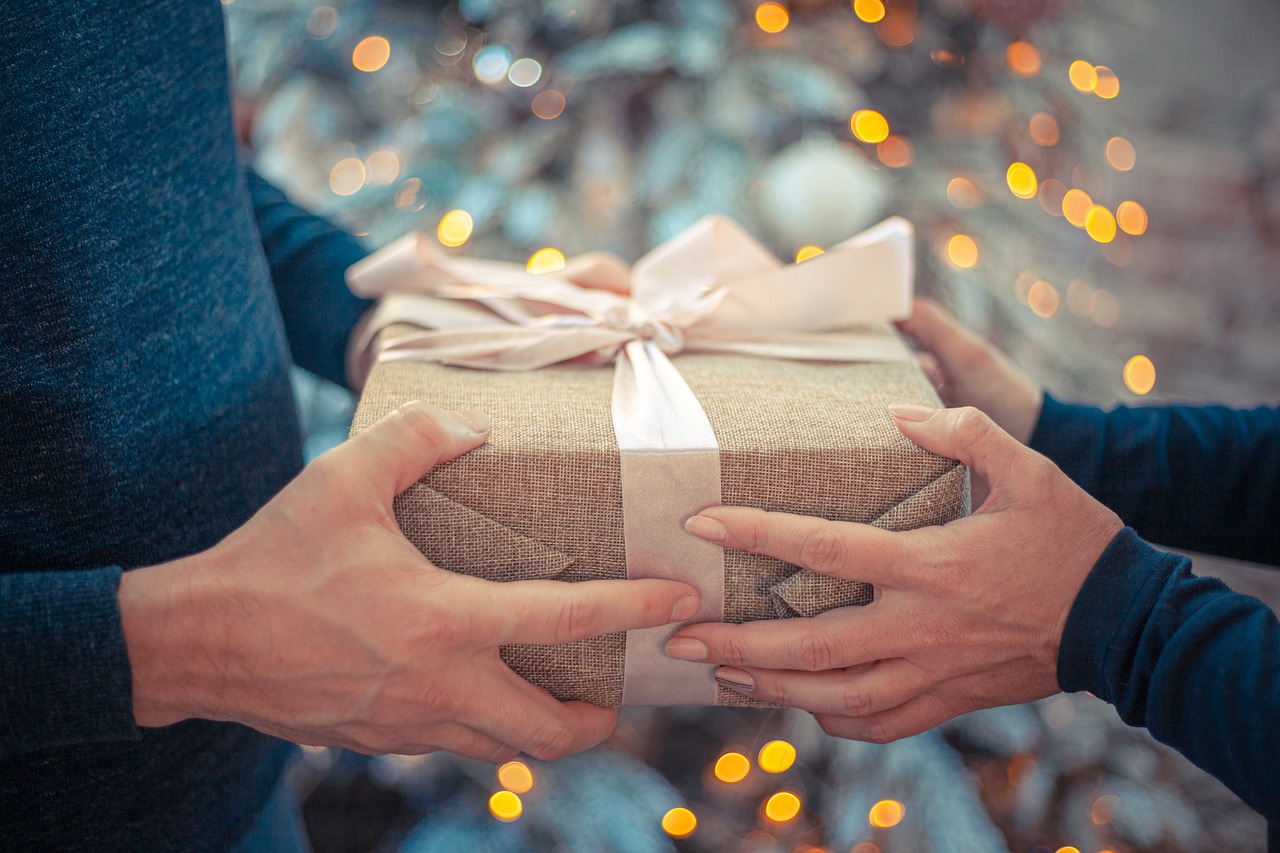
Gifts of Good Fortune
Throughout human history, people have sought ways to invite luck, prosperity, and good fortune into their lives. From ancient traditions to contemporary practices, the belief in the power of lucky charms, talismans, and rituals has transcended cultures and generations. This comprehensive guide delves into the world of “gifts of good fortune,” exploring their origins, symbolism, and practical application in modern times.
The Origins and Symbolism of Gifts of Good Fortune
The concept of gifts of good fortune can be traced back to various ancient belief systems and cultural traditions. In many civilizations, these gifts were seen as physical manifestations of divine blessings, protection, and guidance. They were believed to possess inherent powers that could attract positive energy, ward off misfortune, and bring about abundance and prosperity.
One of the earliest examples of lucky charms can be found in ancient Egyptian culture, where the Eye of Horus (or the Eye of Ra) was a powerful symbol of protection and good health. The Egyptians also revered the ankh, a hieroglyphic symbol representing life and immortality, which was often depicted in amulets and talismans.
In Chinese culture, the belief in feng shui – the practice of harmonizing one’s environment to attract positive energy – has been deeply rooted for centuries. Certain symbols, colors, and numbers are considered auspicious and are incorporated into various aspects of life, from home decor to business practices.
Symbolic Meanings and Cultural Variations
Each gift of good fortune carries its own symbolic meaning, often rooted in cultural beliefs and folklore. Here are some examples:
- Four-leaf clover: In many Western cultures, the four-leaf clover is a powerful symbol of luck and good fortune, with each leaf representing faith, hope, love, and luck.
- Horseshoe: The horseshoe is believed to bring good luck, particularly in European and American traditions, as it was thought to have the power to protect against evil spirits and misfortune.
- Evil eye: In Middle Eastern and Mediterranean cultures, the evil eye is a powerful talisman believed to ward off negative energy and envy.
- Hamsa: Also known as the Hand of Fatima, the hamsa is a popular talisman in Islamic and Jewish cultures, symbolizing the hand of God and serving as a protective charm against the evil eye.
- Dream catcher: In Native American traditions, the dream catcher is a handmade willow hoop adorned with feathers and beads, believed to filter out bad dreams while allowing good dreams to pass through.
While the symbolism and beliefs surrounding these gifts may vary across cultures, they share a common thread: the desire to invite positive energy and good fortune into one’s life.
Feng Shui and the Art of Inviting Positive Energy
Feng Shui, an ancient Chinese practice, is deeply rooted in the belief that our environment has a profound impact on our well-being, prosperity, and fortunes. By arranging and positioning objects and elements in a harmonious manner, Feng Shui practitioners believe that positive energy (chi) can flow freely, bringing about abundance and good fortune.
Principles of Feng Shui
Feng Shui is guided by several principles, including:
- The Five Elements (wood, fire, earth, metal, and water): These elements are believed to interact and influence each other, creating a balance of energies.
- The Bagua Map: A symbolic representation of the nine areas of life (wealth, reputation, relationships, etc.), used to align objects and spaces accordingly.
- Yin and Yang: The concept of balancing opposing yet complementary forces to achieve harmony.
By incorporating these principles into the design and arrangement of living and working spaces, Feng Shui practitioners aim to cultivate positive energy and attract good fortune.
Lucky Colors, Numbers, and Symbols in Feng Shui
In Feng Shui, certain colors, numbers, and symbols are considered auspicious and are believed to attract specific types of good fortune. For example:
- Lucky Colors: Red is associated with luck, prosperity, and joy, while green represents growth, renewal, and harmony.
- Lucky Numbers: The numbers 8 and 9 are considered particularly fortunate, as they symbolize wealth and longevity, respectively.
- Symbolic Objects: Representations of the Chinese mythical creatures, such as the dragon (power and strength) and the phoenix (rebirth and renewal), are believed to bring good luck and protection.
By incorporating these elements into their living and working spaces, Feng Shui practitioners aim to create an environment that nurtures positive energy and attracts abundance.
Lucky Charms and Talismans from Around the World
Beyond Feng Shui, various cultures around the world have their own unique traditions and beliefs surrounding lucky charms and talismans. These objects are believed to possess inherent powers that can protect against misfortune, attract good luck, and bring about prosperity.
Popular Lucky Charms
Here are some of the most popular lucky charms and their meanings:
- Four-leaf clover: Believed to represent faith, hope, love, and luck in Western cultures.
- Horseshoe: Thought to bring good luck and protection, particularly in European and American traditions.
- Rabbit’s foot: Carried as a talisman for good luck, especially in parts of the United States and Europe.
- Ladybug: Seen as a symbol of good luck and prosperity in many European and American cultures.
Traditional Talismans
In addition to lucky charms, various cultures have their own traditional talismans, each with its own unique symbolism and significance:
- Evil eye: A powerful talisman believed to ward off negative energy and envy in Middle Eastern and Mediterranean cultures.
- Hamsa: Also known as the Hand of Fatima, this talisman symbolizes the hand of God and serves as a protective charm against the evil eye in Islamic and Jewish cultures.
- Dream catcher: In Native American traditions, the dream catcher is believed to filter out bad dreams while allowing good dreams to pass through.
- Buddha statues: In Buddhist cultures, Buddha statues are believed to bring peace, harmony, and protection to the home or workspace.
Choosing the right lucky charm or talisman is often a personal journey, influenced by one’s cultural background, beliefs, and personal resonance with the symbolism and energy of the object.
Rituals and Practices for Inviting Good Fortune
Across many cultures, various rituals and practices have been developed to invite good fortune and prosperity into one’s life. These practices often involve cleansing, energizing spaces, and performing specific actions or affirmations to align with the desired positive energy.
New Year’s Traditions for Luck and Prosperity
Many cultures celebrate the arrival of the new year with specific traditions believed to bring good luck and prosperity for the coming year. For example:
- Chinese New Year: Celebrations include cleaning the home to sweep away bad luck, exchanging red envelopes with money for good fortune, and decorating with auspicious symbols like the Chinese character for good luck (福).
- Rosh Hashanah (Jewish New Year): Traditions include eating symbolic foods like apples dipped in honey for a sweet new year, and performing the Tashlich ritual to cast away sins and start fresh.
- Persian New Year (Nowruz): Families prepare a Haft-Sin table with seven symbolic items representing concepts like rebirth, prosperity, and love.
Spiritual Practices and Affirmations
Many spiritual and mindfulness practices incorporate elements of attracting good fortune and abundance. For example:
- Manifestation techniques: Visualization exercises, affirmations, and vision boards to align one’s thoughts and energy with desired outcomes.
- Gratitude practices: Expressing gratitude for existing blessings and abundance, believed to attract more of the same positive energy.
- Meditation and mindfulness: Cultivating a state of present awareness and inner peace, which can invite positive energy and good fortune.
Cleansing and Energizing Spaces
Many traditions emphasize the importance of cleansing and energizing living and working spaces to invite positive energy and good fortune. Some common practices include:
- Smudging: Burning sage or other herbs to purify and cleanse a space of negative energy.
- Sound healing: Using instruments like singing bowls or tuning forks to shift the vibrational energy of a space.
- Space clearing: Utilizing crystals, essential oils, or specialized tools to clear and reset the energy of a space.
By incorporating these practices into one’s routine, individuals aim to cultivate an environment that is conducive to attracting and maintaining good fortune and prosperity.
Gifts of Good Fortune for Special Occasions
Certain occasions and milestones in life are often celebrated with the exchange of gifts believed to bring good luck and fortune. These gifts serve as symbolic representations of well-wishes and blessings for the recipient.
Lucky Gifts for Weddings, Births, and New Beginnings
For events like weddings, births, and other new beginnings, gifting items associated with good fortune is a popular tradition:
- Wedding gifts: Chinese wedding traditions include gifting red envelopes with money, ensuring the couple starts their new life with abundance. Other popular gifts include pairs of mandarin ducks (symbolizing lifelong love) and Buddha statues for peace and harmony.
- Baby gifts: In many cultures, gifting items like lucky bamboo plants (representing growth and prosperity), silver spoons or rattles (for wealth), or evil eye charms (for protection) is believed to bestow blessings on the newborn.
- New home/business gifts: Housewarming and business opening gifts often include objects like Feng Shui crystals, money trees, or elephant figurines (representing strength and good luck).
Corporate Gifts for Business Success and Growth
In the business world, exchanging corporate gifts associated with good fortune is a common practice, especially during events like company anniversaries, client appreciation, or major deals/contracts. Some popular options include:
- Feng Shui desk accessories: Items like wealth vases, money trees, or Chinese coins are believed to attract prosperity and financial success.
- Engraved pens or paperweights: These functional items can be personalized with auspicious symbols or phrases, serving as daily reminders of good fortune.
- Gemstone or crystal decor: Certain gemstones and crystals, like citrine (for success) or amethyst (for wealth), are thought to cultivate positive energy in the workspace.
Personalized Lucky Charms and Their Significance
In addition to traditional lucky charms, many individuals opt for personalized and customized versions that hold special meaning. These can include:
- Birthstone jewelry: Wearing one’s birthstone is believed to bring luck and protection, with each gemstone carrying its own symbolic properties.
- Astrological talismans: Based on one’s astrological sign or birth chart, specific symbols or objects may be recommended as personal talismans.
- Engraved/embossed charms: Personal lucky charms can be engraved with meaningful words, dates, or symbols, imbuing them with additional significance.
The act of gifting these personalized lucky charms often carries the intention of bestowing blessings, protection, and good fortune upon the recipient in a deeply personal way.
Modern Interpretations and Contemporary Trends
While the belief in gifts of good fortune is rooted in ancient traditions, these practices have adapted and evolved to suit modern lifestyles and sensibilities. Contemporary interpretations and trends reflect a fusion of old and new, blending ancient wisdom with contemporary design and sustainability.
Blending Ancient Traditions with Modern Lifestyles
In today’s fast-paced world, individuals are finding ways to incorporate ancient rituals and beliefs into their daily routines. For example:
- Mindfulness apps: Offering guided meditations, affirmations, and manifestation techniques for cultivating positive energy and abundance.
- Feng Shui home decor: Integrating Feng Shui principles into modern interior design, using auspicious colors, shapes, and symbolic objects.
- Wearable talismans: Stylish jewelry and accessories infused with symbolic meanings, allowing individuals to carry their lucky charms wherever they go.

Eco-friendly and Sustainable Lucky Charms
As environmental consciousness grows, there is a growing demand for eco-friendly and sustainable lucky charms and talismans. This includes:
- Recycled materials: Lucky charms and decor crafted from recycled materials like glass, metal, or repurposed fabrics.
- Ethically sourced gemstones: Conscious sourcing of gemstones and crystals used in jewelry and decorative items.
- Handmade and artisanal pieces: Supporting local artisans and traditional craftsmanship in the creation of lucky charms and talismans.
Digital and Technological Representations
In the digital age, the concept of good fortune has found its way into virtual realms as well. Examples include:
- Digital wallpapers and screensavers: Featuring auspicious symbols, lucky numbers, or affirmations as daily reminders.
- Mobile apps and games: Incorporating elements of luck, fortune, and manifestation into interactive experiences.
- Virtual reality experiences: Immersive environments designed to cultivate positive energy and manifestation through visualization techniques.
These modern interpretations demonstrate how ancient beliefs and practices continue to adapt and remain relevant in our ever-evolving world.
Conclusion
The belief in gifts of good fortune has been woven into the fabric of human civilization for centuries, transcending cultures and continents. Whether through lucky charms, talismans, Feng Shui practices, or spiritual rituals, the desire to invite prosperity, protection, and abundance into our lives remains a universal pursuit.
As we navigate the complexities of modern life, these ancient traditions offer a sense of grounding, connection, and hope. By embracing the wisdom of our ancestors and adapting it to our contemporary lifestyles, we can cultivate an environment that nurtures positive energy and attracts good fortune.
Remember, the true power of these gifts lies not only in the physical objects themselves but also in the intentions, beliefs, and actions we imbue them with. By approaching these practices with an open mind and a willingness to explore their deeper meanings, we can unlock a world of possibilities and invite abundance into our lives in ways that resonate with our individual journeys.
So, whether you choose to hang a dream catcher, light a prosperity candle, or simply recite affirmations of gratitude, may these gifts of good fortune guide you towards a life filled with joy, fulfillment, and an abundance of blessings.















